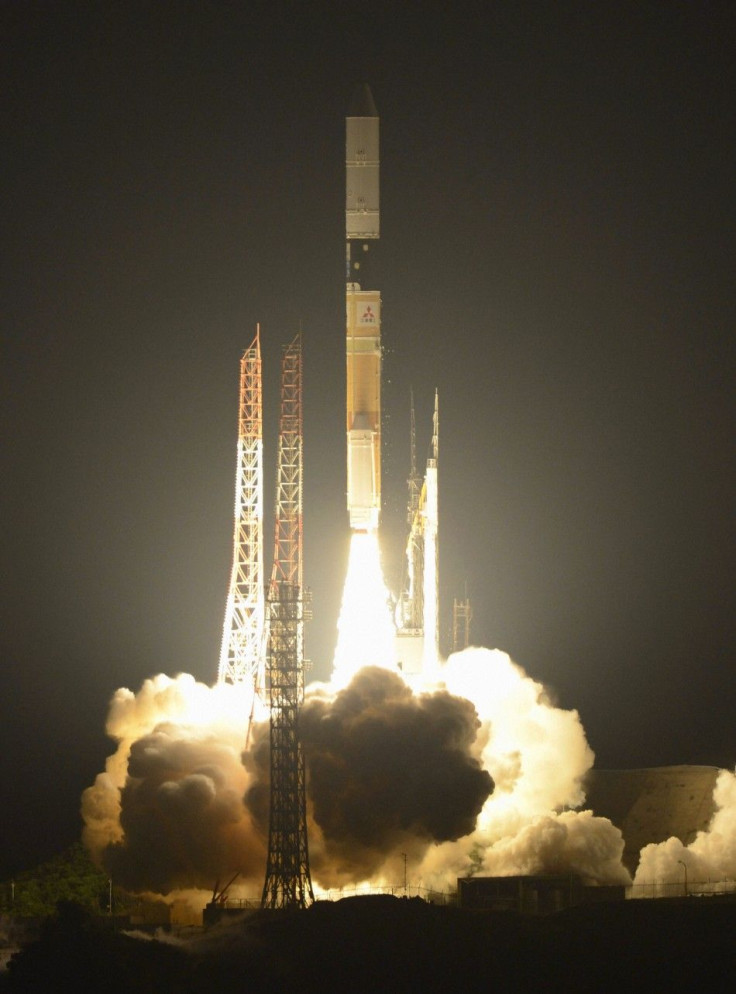South Korea And Japan Jointly Launch Satellite, Weeks After Failed North Korean Blast-Off

More than a month after North Korea's failed rocket launch on April 13, South Korea and Japan have successfully launched another series of their own satellites into orbit in a consolidated effort.
A Mitsubishi Heavy Industries Ltd. (Tokyo:7011) H-IIA rocket lifted off from Tanegashima Space Center last Friday, about 115 kilometers (71 miles) south of Japan's westernmost main island of Kyushu.
The rocket carried a Korea Aerospace Research Institute (KARI)-developed satellite, the Kompsat-3, also known as the 'Arirang-3' (named after a famous Korean folk song). While the South Korean satellite has been described by KARI as designed to monitor agriculture, environmental, and oceanographic conditions, analysts expect that its true nature may be split between civilian and military intelligence-gathering purposes.
The Kompsat-3 is equipped with an ultra-high-resolution camera capable of seeing objects smaller than a meter in diameter, a technology only known to have been deployed onto U.S., Israeli, and EU satellites up until now. Experts say that the highly detailed imaging capabilities could be used to look into North Korea with greater levels of accuracy.
KARI developed the satellite using $240 million over five years, along with assistance from Astrium, the aerospace subsidiary of the European Aeronautic Defense and Space Company, or EADS for short (Euronext: EAD).
However, the Japanese rocket also carried numerous pieces of Japanese equipment into orbit. Those included not only a major Earth observation satellite called 'Shizuku' (or 'tear drop') for spotting hydrological conditions and global climate change, but also two micro-satellite demonstrators. Further miniaturization in satellite technologies is seen as a major step in the future development of space technologies.
The Japanese H-IIA rocket has been used in the past to deploy a space probe to Venus, a lunar orbiter, and various civilian communications and research satellites. Mitsubishi Heavy Industries and the Japan Aerospace Exploration Agency (JAXA) have hoped to use the H-IIA to boost the country's commercial space launch industry.
Speaking for Mitsubishi, Kenichi Nakamura noted that with the success of this commercial launch, we hope to build customers' trust and get the next order, entering a business dominated by European Ariane and Russian [Proton] rockets.
The competition against European and Russian alternatives will be a difficult one.
So far, KARI has been the only foreign client to follow through with a contract to use the powerful high-cost rocket. In the past, even domestic orders have lagged, and Japanese companies have often looked to France's Arianespace to launch their satellites. That meant instead of using facilities at home in Japan, Japanese companies were often choosing to go halfway around the world to French Guiana to get their equipment into space.
South Korea's next Arirang-3A satellite will not be using an H-IIA rocket either. Instead, it will blast off from the Dneipr-1 rocket, a converted ICBM provided by ISC Kosmotras, a joint project between Russia, Ukraine, and Kazakhstan.
The irony of South Korea using an old intercontinental ballistic missile (ICBM) to deliver their satellites may not be lost on North Korea. Pyongyang's April launch of the Kwangmyongsong-3 satellite failed after its Unha-3 rocket, based on technologies of the Taepodong-2 ballistic missile, exploded shortly after lift-off.
The message being sent to the North Korean government -- and obstructed from its average citizens -- is just how far the hermit kingdom lags behind its neighbors in terms of technological progress.
© Copyright IBTimes 2024. All rights reserved.











